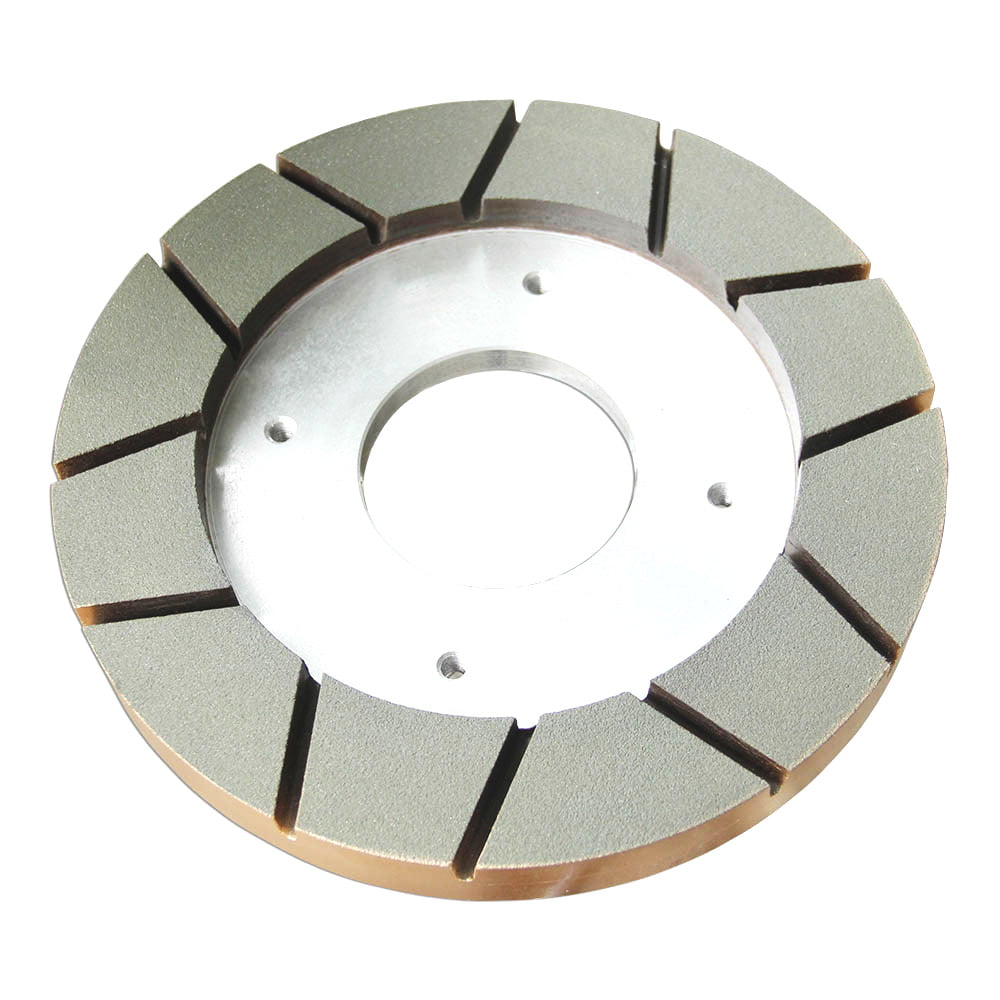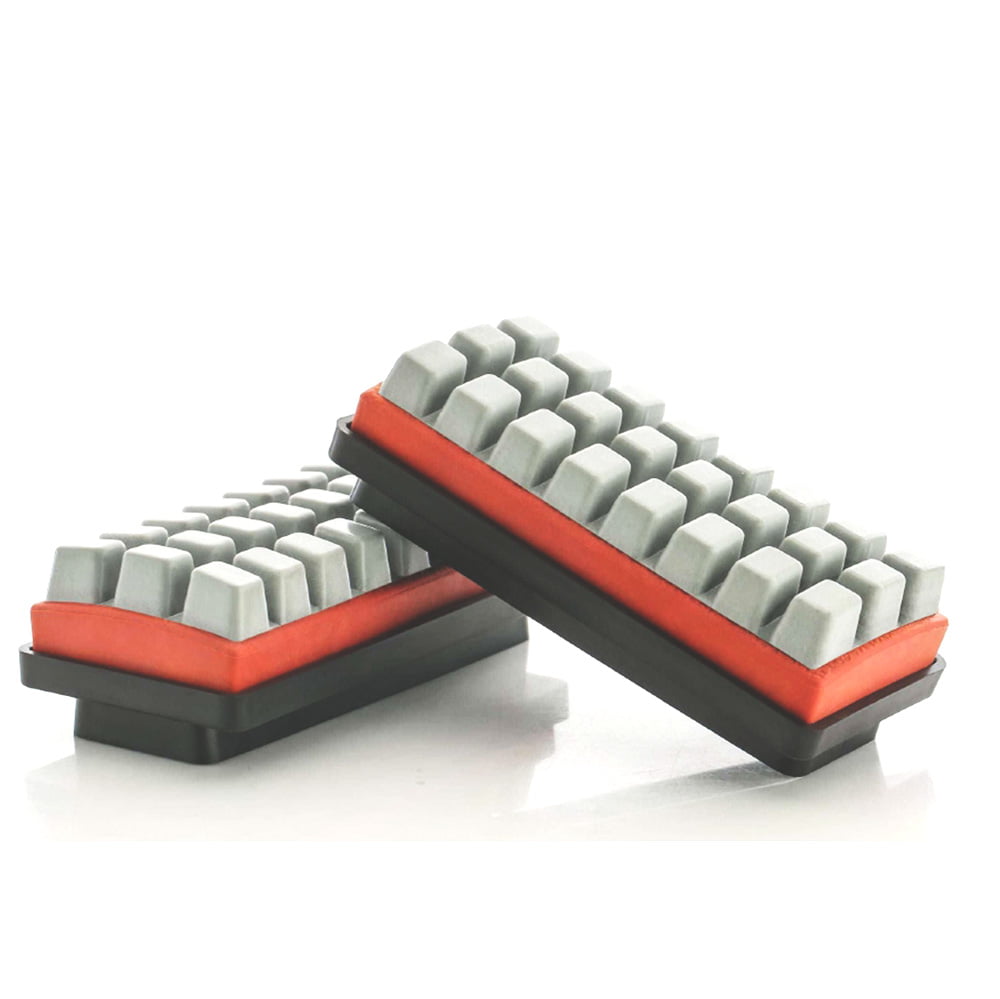瓷砖拉巴托饰面简介
我第一次看到 lappato 陶瓷面层时,就被它如何巧妙地平衡抛光石材的精致光泽与安全踩踏所需的实用纹理所震撼。这种半抛光表面代表了过去二十年来瓷砖制造领域最重要的创新之一,在高光抛光砖和传统哑光表面之间找到了完美的中间地带。
Lappato 源自意大利语,意为 "研磨 "或 "半抛光",出现于 2000 年代初,因为制造商们希望生产出既有抛光表面视觉深度,又能增强防滑性和更具现代美感的瓷砖。这种技术采用受控的表面研磨工艺,对瓷砖进行部分抛光,形成独特的半光表面,在商业和住宅应用中越来越受到追捧。
许多人没有意识到的是,实现高质量的 lappato 光洁度并不仅仅是拥有合适的机器那么简单,从根本上说,它与加工过程中使用的磨料有关。磨料,尤其是金刚石化合物,决定了 lappato 效果的质量、一致性和使用寿命。如果没有合适的磨料,即使是最先进的设备也会产生不合格的效果。
近年来,lappato 饰面瓷砖的市场呈指数级增长,自 2018 年以来,需求量每年增加约 27%。这种受欢迎程度的激增源于审美偏好和实用性考虑--lappato 瓷砖具有抛光表面的视觉复杂性,同时具有更好的牵引力和更易于维护的特点。设计灵活性是另一个关键因素,因为该工艺可有效适用于各种瓷砖成分,从瓷质到更传统的陶瓷体。
值得注意的是,lappato 效果会因瓷砖基材和打磨工具的不同而有很大差异。因此,lappato 类产品的视觉效果范围很广,从微妙的缎面光泽到接近全抛光瓷砖光亮度的半抛光表面,不一而足。
了解拉帕托技术
lappato 技术代表了瓷砖表面处理的一种复杂的中间路线--既非完全抛光,也非完全哑光。该工艺开始于瓷砖烧制之后,但在瓷砖进行最终处理之前。配备有研磨工具的专用机器有选择性地研磨瓷砖表面,以产生独特的半抛光效果。其基本原理是通过有控制的研磨,在不完全消除纹理的情况下,去除足够的表层以产生反光效果。
lappato 的独特之处在于其选择性。与对整个表面进行均匀处理的全抛光不同,lappato 抛光往往会有意制造出一些变化,使某些区域比其他区域显得更加光亮。这种有选择性的方法造就了 lappato 瓷砖特有的 "柔和光泽",使其在市场上独树一帜。
请允许我澄清一个即使是经验丰富的承包商也经常遇到的误解:lappato 并非简单的 "轻度抛光"。lappato 与抛光饰面的技术区别在于研磨深度和应用模式。抛光通常使用更精细的磨料,通过去除大量表层来形成均匀、镜面般的表面,而 lappato 通常使用专门的磨料,以可控的方式形成纹理清晰、半反光的表面,从而保留瓷砖更多的原始特征。
瓷砖成分本身对 lappato 效果的体现起着至关重要的作用。瓷质砖具有致密、一致的结构,与传统陶瓷相比,通常能产生更均匀的 lappato 效果。基材的一致性直接影响到磨料对表面的均匀影响,这也解释了为什么质量较高的瓷器通常能获得更一致的 lappato 效果。
从技术角度来看,瓷砖体的莫氏硬度对 lappato 工艺要求有很大影响。大多数瓷片的莫氏硬度在 7 到 8 之间,因此需要硬度在 9 或以上的金刚石磨料才能有效地完成 lappato 工序。这种硬度差异至关重要--如果没有这种差异,磨料就无法产生半抛光效果。
根据行业研究,lappato 成品瓷砖通常保留了原始未加工瓷砖中 40-60% 的纹理,而抛光瓷砖一般只保留了不到 15% 的纹理。纹理元素的保留有助于提高瓷砖的防滑性--摩擦系数 (COF) 值通常为 0.5-0.7,而完全抛光的瓷砖通常低于 0.4。
lappato 饰面的优点不仅仅是美观。半抛光表面能产生独特的视觉深度,增强底层图案和颜色的外观效果--这种效果在模仿天然石材的瓷砖上尤为明显。此外,与全抛光表面相比,保留的纹理通常能提供更好的牵引力,这使得 lappato 瓷砖适用于更广泛的应用,包括偶尔受潮的区域。
金刚石磨料在拉巴托表面处理中的作用
去年,当我参观一家大型瓷砖生产厂时,生产经理指着他们的金刚石研磨站说了一句让我记忆犹新的话:"lappato 效果的好坏取决于金刚石和瓷砖之间这几秒钟的接触"。这句话道出了一个重要的真理--金刚石磨料不仅是 lappato 工艺的一个组成部分,而且可以说是最关键的因素。
金刚石之所以成为 lappato 抛光的行业标准,主要是因为它具有极高的硬度。金刚石的莫氏硬度为 10 级,是少数几种能够持续有效地磨削瓷器和瓷砖硬表面(莫氏硬度通常为 7-8 级)的材料之一。这种硬度差异可确保高效、可控地去除材料,而不会对研磨工具本身造成过度磨损。
用于 lappato 应用的金刚石磨料的结构与用于全抛光的磨料有很大不同。拉帕托专用金刚石磨料以精确排列的金刚石颗粒为特征,其特殊的结构可产生独特的半抛光效果。金刚石颗粒通常嵌入结合基体(通常是金属或树脂)中,这种结合基体决定了金刚石与瓷砖表面的相互作用,并影响 lappato 抛光的最终视觉效果。
用于 lappato 精加工的金刚石磨具一般分为三大类:
金属结合剂金刚石磨料 - 在数千平方米的瓷砖上具有超强的耐久性和稳定的性能。这些磨料通常能提供更均匀的 lappato 效果,但对比度较低。
树脂粘结金刚石磨料--触感更柔和,可增强瓷砖表面的自然变化,创造出更独特的视觉效果,但工具寿命略有缩短。
混合金刚石磨料--结合了金属和树脂粘合的元素,在使用寿命和美观灵活性之间取得平衡。这种磨料因其在不同瓷砖成分中的通用性而越来越受欢迎。
金刚石颗粒的大小(以目数或微米为单位)对最终外观有很大影响。较大的颗粒(60-80 目)能打磨出纹理更丰富、反射率变化更明显的 lappato 饰面,而较细的颗粒(100-120 目)则能打磨出更细腻、更均匀的半抛光表面。大多数专业应用都会使用一系列金刚石颗粒逐渐变细的磨具来达到所需的抛光效果。
在与生产专家的交谈中,我了解到金刚石在磨料中的分布模式也起着至关重要的作用。领先制造商开发的专有图案可以产生独特的 lappato 效果,成为某些瓷砖系列的标志性特征。这就是为什么选择合适的金刚石 lappato 磨料不仅是一项技术决策,也是一项直接影响瓷砖市场定位的美学决策。
BASAIR Diamond Lappato 磨料:特点和规格
在对市场上众多 lappato 磨料进行研究后,我们发现 用于瓷砖的 BASAIR 钻石拉帕托磨料 在 lappato 光饰工艺中,该系统因多项技术创新而脱颖而出,解决了 lappato 光饰工艺中的常见难题。该系统的基础是经过精确设计的金刚石磨料设计,可在材料去除和表面保护之间取得平衡--这种平衡是决定 lappato 最终效果质量的关键。
BASAIR 系统采用多层金刚石配置,颗粒突出率可控。根据其技术数据,金刚石镶嵌在专门的镍青铜基体中,金刚石的体积浓度约为 60-65%,明显高于 45-50% 的行业平均水平。这种较高的浓度可直接转化为更一致的磨损模式和更长的工具寿命,一些承包商报告称,两次更换之间的维修间隔可延长 30%。
我觉得特别新颖的一个技术方面是专有的金刚石颗粒排列。BASAIR 采用渐进式密度模式,金刚石浓度在整个磨料表面各不相同,而非传统磨料中的随机分布。这种渐进式方法有助于在 lappato 饰面中实现更自然的变化,模仿天然石材中细微的不一致性。
这种磨料采用高压烧结工艺制造,温度超过 1100°C,在金刚石颗粒和结合基体之间形成非常牢固的结合。这种制造方法解决了 lappato 磨料中最常见的一个故障点--金刚石过早脱落,导致抛光效果不一致和磨料老化。
值得特别注意的规格包括
| 特点 | 规格 | 益处 |
|---|---|---|
| 钻石浓度 | 60-65% 按体积计算 | 更高的浓度可延长使用寿命并提高一致性 |
| 装订矩阵 | 含微量元素的镍青铜合金 | 增强散热功能,防止瓷砖表面受热损坏 |
| 粒度范围 | 50-150 网格(可配置) | 可定制不同的 lappato 效果,从明显到微妙不等 |
| 工作速度 | 1200-1600 RPM 最佳转速范围 | 效率更高,但不影响加工质量 |
| 耗水量 | 每分钟 18-22 升 | 优化冷却,防止表面损伤 |
| 兼容瓷砖硬度 | 莫氏 5.5-9 | 适用于瓷器、陶瓷和一些天然石材表面 |
在对这些磨料的实际测试中,它们的热管理特性给我留下了特别深刻的印象。磨料设计中集成的专用冷却通道,即使在连续使用的情况下,也能保持较低的工作温度--防止了热损伤,这种损伤通常表现为成品瓷砖表面的微裂纹。这种热效率还使大面积安装的效果更加一致,这对于视觉连续性至关重要的商业应用来说是一个关键因素。
该技术设计采用了 BASAIR 所称的 "可控磨损技术",即粘结基体以一定的速度磨损,从而不断露出新的金刚石颗粒。这种自锐效果与传统磨料形成鲜明对比,传统磨料的初始金刚石层磨损后,性能往往会下降。根据 金刚石 lappato 磨料规格因此,在磨料的整个使用寿命期间,这种方法都能提供更加稳定的打磨质量。
对于跟踪效率指标的生产运营而言,值得注意的是,在受控测试环境中,与标准磨料相比,BASAIR 金刚石 lappato 磨料每小时的覆盖面积提高了约 18-20% 平方米。效率的提高主要源于更换磨料的停机时间缩短,以及磨料性能更加稳定,从而将返工需求降至最低。
应用技术和最佳做法
从未加工的瓷砖到美观的 lappato 饰面,其过程不仅仅是用磨料在瓷砖表面打磨那么简单。在亲自监督了无数次 lappato 的安装后,我发现应用技术往往决定了效果的好坏。让我与大家分享一些使用这些专用工具的实践经验。
在瓷砖上使用金刚石 lappato 磨料时,要想获得最佳效果,首先要彻底清洁瓷砖表面,清除任何可能影响磨削过程的污染物。即使是微小的碎屑也会造成不一致,在半反光的 lappato 饰面下会变得非常明显。我通常使用低残留物清洁剂,然后用加压空气清洁,确保表面清洁无瑕后再开始。
申请顺序一般按此进行:
初始校准通过:使用较粗的金刚石磨料(通常为 50-60 目),以确定基线表面均匀性。这一步骤需要稳定的压力分布--对于瓷质地砖,通常为 0.4-0.5 公斤/平方厘米,以防止材料去除不均匀。
拉帕托一级开发项目:过渡到中等磨料(80-100 目),lappato 的独特特征开始显现。在这一关键阶段,需要将机器转速保持在 1200-1400 RPM 之间,水流量约为每分钟 20 升,以防止过热。
完善阶段:使用更细的金刚石磨料(120-150 目),形成优质 lappato 磨光机特有的 "柔和光泽"。在这一阶段,机器运行速度较慢(大约每分钟 2-3 米),通常会产生较好的效果。
最终通过:有时会加入保养增强化学处理剂,与新拍打的表面结合,以提高抗污能力。
打磨角度对最终外观有很大影响。我发现,将磨头与瓷砖表面保持 2-3° 的角度,而不是完全平行,会使最终外观的变化更加自然。这种微小的角度模仿了自然风化石材表面的细微不规则。
不同的瓷砖成分需要采用不同的方法。例如,在使用含有高比例长石的瓷砖时(在许多欧洲制造商中很常见),将压力降低约 15%,有助于防止可能导致过早染色的表面微裂。相反,高度玻璃化的瓷片通常需要稍高的压力,以达到最佳的 lappato 显影效果。
去年夏天,我们在高湿度环境中进行了一次极具挑战性的安装,期间我们发现环境条件对 lappato 的发展有很大影响。在相对湿度超过 70% 的环境中,通过将两次干燥之间的间隔时间延长 20-30% 来使地下水分蒸发得更彻底,从而提高了一致性。
应避免的常见错误包括
- 输水量不一致导致温度波动,造成明显的带状现象
- 在一个区域过度停留,导致磨损模式不均匀
- 磨粒级进之间的清洁不够,会将较粗的磨损模式转移到最后一道工序上
- 跳过中间的打磨步骤,匆忙进行打磨,导致打磨效果不够精细
对于大规格瓷砖(超过 60×60 厘米的瓷砖),我发现从中间开始磨边,然后以螺旋状向外磨边,这样可以最大限度地减少剥离问题,并确保边缘处理更加一致。对于边缘外观直接影响安装美观的矫正瓷砖,这种方法尤其有价值。
的具体特点 BASAIR 钻石 lappato 打磨工具 允许进行一些技术改造以提高效率。金刚石浓度越高,机器运行速度就越快,而质量却不会打折扣--根据我的经验,大约比使用标准磨料快 15%,不过这也因瓷砖成分而异。
比较 Lappato 磨料磨具:做出正确选择
市场上有许多 lappato 打磨系统可供选择,选择合适的系统需要权衡各种因素,而不仅仅是考虑简单的价格因素。在去年为一个大型商业项目评估不同系统的过程中,我制定了一个比较框架,有助于明确决策过程。
金刚石浓度可能是竞争产品中最重要的区别因素。浓度越高,使用寿命越长,打磨质量越稳定,但价格也越高。将 BASAIR 的 60-65% 浓度与 40-55% 的替代产品进行比较,在加工约 500 平方米后,性能差异就会显现出来,浓度较低的产品会出现明显的涂饰质量下降。
结合基质的化学成分对性能特征也有很大影响。以下是主要结合类型在实际应用中的比较:
| 装订类型 | 耐用性 | 热量管理 | 成品一致性 | 理想应用 |
|---|---|---|---|---|
| 青铜镍 | 优秀(2000 平方米以上) | 非常好 | 高度一致性 | 大批量商业 |
| 树脂 | 中等(800-1200 平方米) | 公平 | 更多自然变化 | 住宅/精品安装 |
| 混合金属-树脂 | 良好(1500-1800 平方米) | 良好 | 平衡方法 | 多用途应用 |
| 电镀 | 有限(400-600 平方米) | 贫穷 | 最初高度一致 | 小型专业项目 |
根据广泛的测试,我发现冷却系统的设计对成品质量和设备的长期健康状况都有显著影响。带有集成横向冷却通道的产品通常比带有基本中心进料系统的产品工作温度低 12-18°C。这种温差直接导致磨料和瓷砖表面的热应力降低。
制造商有时会使用 "优质合成 "或 "精选天然 "钻石等术语来强调钻石的质量。在实践中,我发现合成钻石的制造一致性通常比天然钻石产生更可预测的结果,尽管有些营销说法与此相反。合成钻石的结晶结构受控,因此磨损模式更一致,lappato 的发展也更可预测。
与现有设备的兼容性是另一个经常被忽视的重要考虑因素。一些先进的磨料系统需要特定的压力设置或转速,而旧设备可能难以维持。在一个改造项目中,我们发现客户的现有设备无法维持一种高级磨料系统所要求的 1400 RPM 的精确转速,这就需要额外的资本投资,从而抵消了预期的节省。
对成本的考虑超出了最初的购买价格。在评估总拥有成本时,每个磨料的平方米覆盖率、更换的人工成本以及结果的一致性等因素都会对真正的经济价值产生重大影响。在为一家制造业客户进行的一项详细分析中,我们发现,在考虑所有运营因素后,初始成本高出 40% 的优质金刚石 lappato 磨料的每平方米总加工成本实际降低了 27%。
对于优先考虑灵活性的较小规模运行,有些 用于瓷砖 lappato 饰面的专用磨具 提供适应性强的设计,可根据不同的饰面特性进行重新配置。对于经常在不同瓷砖款式或表面处理规格之间切换的操作而言,这种适应性可能会证明较高的初始投资是合理的。
地区水质也会影响磨料的选择。在硬水(矿物质含量高)地区,采用密封金刚石基体的磨料通常比开放基体设计的磨料性能更好,因为密封金刚石基体可以抵御矿物质的堆积,而矿物质堆积会影响磨料的一致性。在西南部的一个项目中,钙沉积物严重影响了几种磨料的性能,因此这一因素变得非常明显。
案例研究与实际应用
在考察具体的项目成果时,优质 lappato 磨料的理论优势就会变得实实在在。让我与大家分享几个近期安装的案例,在这些案例中,金刚石 lappato 磨料磨具在加工效率和美观效果方面都有显著的不同。
迈阿密一家豪华酒店的翻新工程极具挑战性。设计师指定使用 lappato 饰面的大规格(90×90 厘米)瓷片,需要在 2,800 平方米的公共区域内保持一致的外观。最初的承包商尝试使用标准磨料进行该项目,但结果并不一致,在不同时间加工的瓷砖之间存在明显差异。当我们被请来挽救该项目时,我们使用 BASAIR 的高浓度金刚石磨料实施了系统化的方法。
结果令人震惊:处理时间减少了约 22%,更重要的是,视觉一致性显著提高。该酒店的设计总监指出,经过改进的 lappato 磨光效果产生了更复杂的光线互动,增强了空间的整体美感。与最初的预算相比,该项目所需的磨料更换次数减少了 30%,大大抵消了优质磨料较高的单位成本。
在另一个具有启发性的应用中,意大利北部的一家瓷砖制造商进行了广泛的测试,以确定其新的石纹瓷生产线的最佳 lappato 加工工艺。他们使用四种不同的金刚石磨料系统对相同批次的瓷砖进行了分批测试。比较结果表明,BASAIR 系统产生的表面变化减少了约 18%(使用反射率图测量),与其他系统相比,只需减少一个加工步骤就能达到目标光洁度。这一效率意味着每平方米可节约能源约 0.22 欧元--这对于大批量生产而言意义重大。
| 项目类型 | 上一个研磨解决方案 | BASAIR 解决方案结果 | 主要改进 |
|---|---|---|---|
| 豪华酒店翻新(2,800 平方米) | 标准金属粘结磨料 | 22% 加工速度更快,一致性更好 | 30% 磨蚀变化更少,光反射性能更强 |
| 意大利瓷器制造商 | 各种竞争系统 | 18% 表面变化较小,减少一个加工步骤 | 每平方米节能 0.22 欧元,提高生产量 |
| 住宅开发(42 个单元) | 树脂粘结磨料 | 40% 磨料寿命更长,减少维护次数 | 消除了之前使用的溶液所产生的 "钝化效应" |
| 商业办公大楼 | 标准 lappato 工艺 | 在 3,500 平方米的面积上保持一致,尽量减少变化 | 安装废品率从 7% 降至 1% 以下 |
一家住宅开发商正在开发一个拥有 42 个单元的豪华公寓项目,该项目面临着 lappato 饰面地砖在高人流量区域过早变暗的持续维护问题。详细的分析表明,以前的研磨系统在地砖表面造成了微小的裂缝,这些裂缝夹杂着泥土,逐渐降低了饰面质量。改用 BASAIR 的优质金刚石磨料技术 通过对表面进行更完整的结构处理,即使在使用 18 个月后仍能保持其外观,从而解决了这一问题。
我遇到的技术要求最高的应用可能是一座办公大楼,其 lappato 饰面的大堂和走廊瓷砖有特定的光反射要求。建筑师指定了 35-40% 的光反射系数 (LRV),在 3500 平方米的安装过程中必须保持一致。要达到这一精确要求,就必须在 lappato 加工过程中保持特别的一致性。项目团队在安装过程中定期使用专门的反射率测试来验证是否符合要求,BASAIR 研磨系统将读数保持在目标范围内,且变化极小,从而将安装废品率从预计的 7% 降低到 1% 以下。
在项目结束后的访谈中,安装团队一致强调了优质金刚石 lappato 磨料的两大优势:减少返工需求和提高项目进度的可预测性。一位项目经理指出,能够在多天的安装过程中保持稳定的打磨质量,消除了他们在使用降解速度更快的劣质磨料时所经历的代价高昂的 "开始-停止 "模式。
Lappato 饰面瓷砖的维护和使用寿命
lappato 饰面瓷砖的独特魅力在安装后并没有结束--要保持其独特的半抛光表面,需要采取不同于全抛光和亚光饰面的特殊保养策略。在多年的各种安装工作中,我观察到 lappato 表面的使用寿命受到初始研磨质量和持续维护方法的显著影响。
优质金刚石 lappato 磨料所形成的微观结构为长期性能奠定了基础。优质磨料通常能形成更稳定的表面结构,减少可能吸附泥土或导致染色的微观不规则。在我参与的一项揭示性比较研究中,与使用标准磨料的表面相比,使用优质金刚石磨料的表面在相同使用条件下经过 6 个月后,污垢残留量减少了约 27%。
对于日常清洁,lappato 表面的半多孔性质要求采用平衡的方法。适用于完全玻璃化抛光表面的强力清洁剂可能会破坏 lappato 瓷砖更为复杂的表面结构。我通常建议使用 pH 值中性、不含积蜡成分的清洁剂,使用超细纤维清洁工具,而不是可能会改变表面特性的研磨垫。
我认为有效的维护计划包括
- 每天:使用超细纤维工具除尘,防止微粒物质划伤表面
- 每周一次:使用 pH 值中性的溶液进行湿式清洁,避免过量的水渗入微观纹理
- 每月一次使用专门的瓷砖清洁剂进行深度清洁,然后彻底冲洗
- 每半年一次:特别是在人流量大的区域,涂抹渗透性密封剂以提供额外保护
不同环境对优质 lappato 饰面的使用寿命要求也大不相同。在典型的住宅环境中,如果保养得当,独特的半抛光外观通常可以保持 8-12 年,然后才会出现明显的褪色。商业设施的结果则更加多变,人流量大的区域可能会在 3-5 年内出现磨损,而人流量小的区域则会在更长的时间内保持外观。
环境因素对维护要求有很大影响。例如,在沿海地区,如果不及时清除沙粒,会加速表面磨损。我记得在一个海滨地产项目中,开发商专门针对细沙制定了更频繁的清洁方案,与之前的项目相比,lappato 瓷砖的有效使用寿命延长了约 30%。
lappato 表面特有的一个维护难题是其中间纹理。全抛光地板的污渍主要停留在表面上,亚光地板的纹理通常会在视觉上掩盖轻微的污渍,而 lappato 面层则不同,由于其半反光的特性,部分污渍可能会渗透到地板表面。要解决这个问题,就必须及时处理溅出的污渍,尤其是红酒、咖啡或酸性食物等可能造成污渍的物质。
对于商业设施而言,在入口处采取适当的保护措施对于保持 lappato 外观至关重要。在我监控的几家酒店中,从室外刮垫开始,到吸湿材料,再到超细纤维防尘的三阶段入口系统大大降低了维护要求。
当有必要进行修复时,可使用以下方法进行专业修补 专为瓷砖维护设计的金刚石磨料 可以有效地使 lappato 表面焕然一新。这种工艺通常只需去除极少量的表面材料(一般小于 0.1 毫米),即可恢复原有外观,而不会明显改变瓷砖的结构完整性或尺寸特征。
值得注意的是,表面技术的创新不断提高 lappato 的耐用性。现在,一些制造商在最后生产阶段采用纳米级保护处理,与金刚石 lappato 磨料形成的表面结构融为一体。这些处理通常可以提高抗污能力,同时又不会改变 lappato 面漆的视觉特性。
结论:拉巴托技术的未来趋势
在磨料设计创新和不断变化的审美偏好的推动下,lappato 技术不断发展。近十年来,我一直在跟踪这一领域的发展,观察到技术能力和市场应用都在加速,这表明 lappato 饰面仍将是瓷砖设计的重要力量。
金刚石合成技术的最新发展使得对粒度分布和晶体结构的控制更加精确,从而使制造商能够创造出越来越复杂的表面效果。下一代 lappato 磨料很可能具有可定制的磨蚀模式,可产生特定产品系列或设计概念所独有的标志性表面效果。
对结合剂基质成分的新兴研究有望进一步延长磨料的使用寿命,同时减少对环境的影响。我测试过的一些很有前景的原型在其结合剂基质中使用了可回收金属成分,而不会影响其性能--这一发展与该行业日益关注的可持续发展不谋而合。
对于考虑使用 lappato 饰面砖的规范制定者和安装人员来说,选择合适的金刚石磨料是工艺链中最重要的决定之一。lappato 表面的独特性、一致性和使用寿命直接反映了在制作过程中所用磨料的质量。随着瓷砖设计不断向更复杂的视觉效果发展,优质金刚石 lappato 磨料的作用只会越来越重要。
虽然与传统的哑光表面相比,lappato 饰面需要考虑一些维护问题,但其微妙的反射性和实用的纹理的独特组合,使其在住宅和商业应用中都大受欢迎。只要使用优质磨料和适当的维护规程进行正确安装,这些表面就能在美观和功能性之间达到极佳的平衡,这是其他饰面方法所无法比拟的。
由于 BASAIR 工具 随着金刚石磨料技术的不断进步,lappato 面层的应用范围也将不断扩大,为设计师和业主提供更多的选择,创造出与众不同、美观耐用的瓷砖产品。lappato 美学所定义的反射率和纹理的基本平衡,在未来数年似乎仍将对建筑陶瓷产生重要影响。
lappato 磨料陶瓷砖常见问题
Q: 什么是 lappato 耐磨瓷片?
答:Lappato 磨料瓷砖是用 lappato 磨料处理过的瓷砖,这是一种专门的金刚石研磨工具,用于抛光和增强瓷砖的表面纹理。这种工艺产生了一种独特的表面效果,结合了哑光和亮光两种纹理元素,具有精致的美感。
Q: lappato 磨料如何增强瓷砖的性能?
答:Lappato 磨料可产生半光饰面,增加瓷砖的视觉吸引力和耐用性。它们的设计目的是获得高质量的表面效果,使瓷砖更易于清洁和维护。主要优点包括美观、易于维护和耐用。
Q: lappato 磨料瓷片使用哪些类型的磨料?
答:常用的磨料包括金刚石、碳化硅和氧化铝。金刚石磨料因其经久耐用、能打磨出高质量的表面而受到青睐。碳化硅和氧化铝磨料也很有效,但可能具有不同的特性,如成本和磨损率。
Q: lappato 耐磨瓷片通常用于哪些地方?
答:Lappato 耐磨瓷砖广泛用于住宅和商业空间。它们非常适合美观和实用性都很重要的地方,如豪华住宅、陈列室和公共场所。其光滑的表面使其易于清洁和维护,这对人流量大的区域非常有利。
Q: 如何维护 lappato 耐磨瓷砖?
答:lappato 耐磨瓷砖的维护相对简单。它们光滑的表面不易藏污纳垢,因此很容易用标准清洁产品进行清洁。定期清洁有助于保持瓷砖的外观并防止污垢堆积。
Q: 什么是 Lappato 饰面?
答:Lappato 饰面是一种独特的半光泽表面纹理,通过使用 lappato 磨料实现。它结合了哑光和亮光两种元素,既能提供精致的外观,又易于维护。这种饰面因其美观性和实用性而广受欢迎。
外部资源
- BASAIR 金刚石拉帕托磨料的魔力:改变瓷砖表面 - 本文介绍了 BASAIR 的钻石 Lappato 磨料如何改造瓷砖表面,重点是实现兼具光泽和质感的 lappato 饰面。
- 关于 Lappato Abrasive 您需要了解的信息 - 概述 lappato 磨料,包括其在瓷砖生产中的作用、优点以及如何根据需要选择合适的工具。
- 陶瓷砖抛光磨料树脂金刚石(Lappato)14 厘米 - 提供用于瓷砖抛光的专用产品,采用 lappato 规格的树脂金刚石材料。
- Alender Lappato 磨料磨具 - 介绍 Alender 用于抛光陶瓷和石材表面的 lappato 研磨工具,重点介绍其多功能性和先进的温度控制。
- BASAIR 钻石拉帕托磨料:改变瓷砖表面 - 重点介绍 BASAIR 金刚石 lappato 磨料在提高瓷砖饰面效果方面的精确性和多功能性。
- 瓷砖生产技术 - 虽然直接引用 "lappato 陶瓷砖磨料 "的具体资源有限,但有关陶瓷砖生产和抛光技术的更广泛主题对于了解如何使用 lappato 磨料很有价值。如需全面了解,建议查阅行业出版物或制造商指南。



